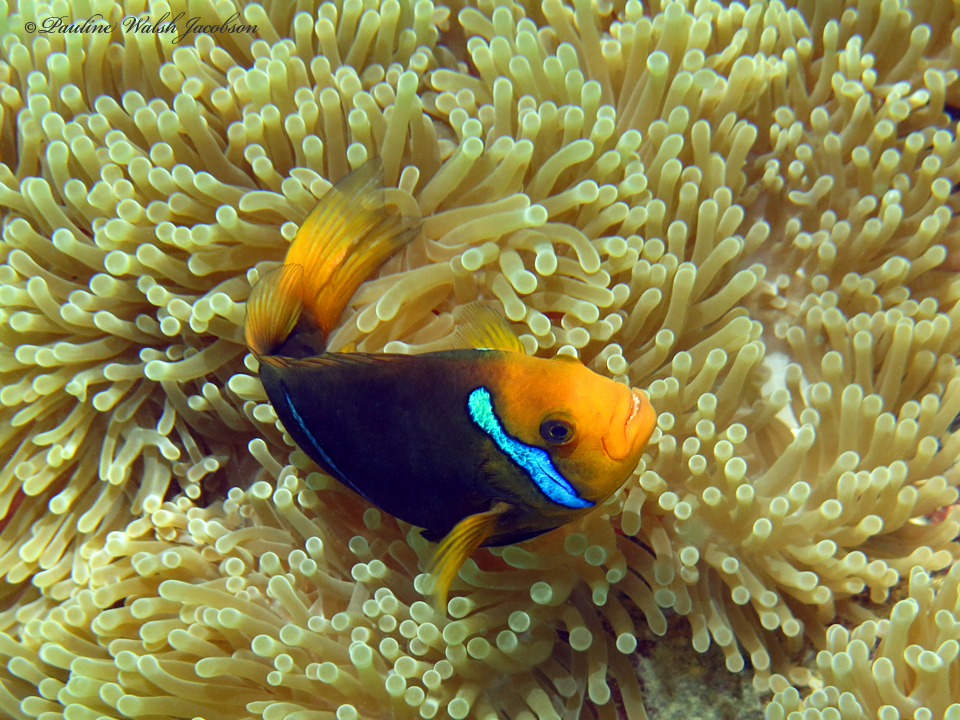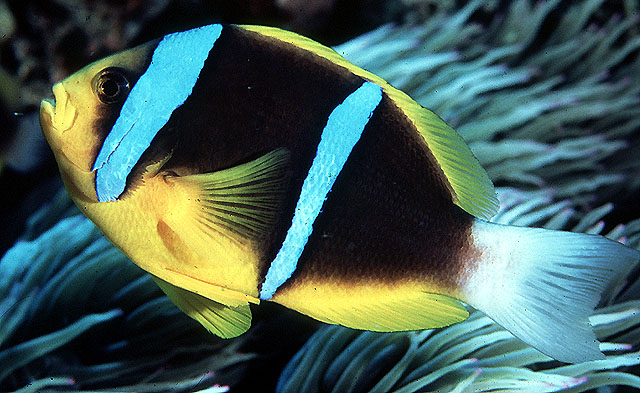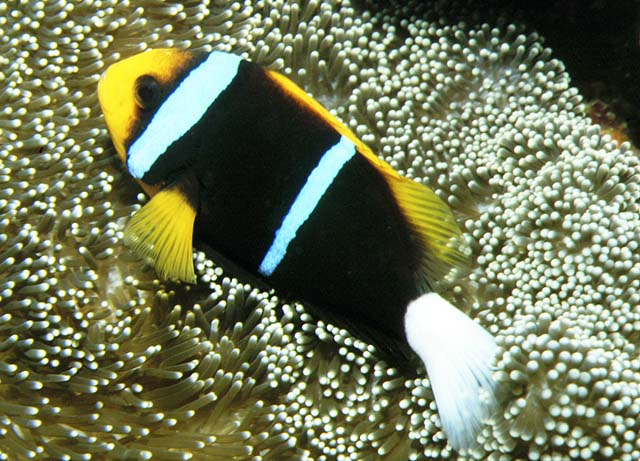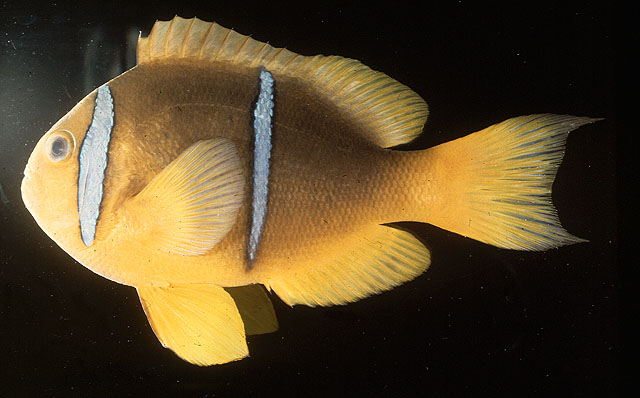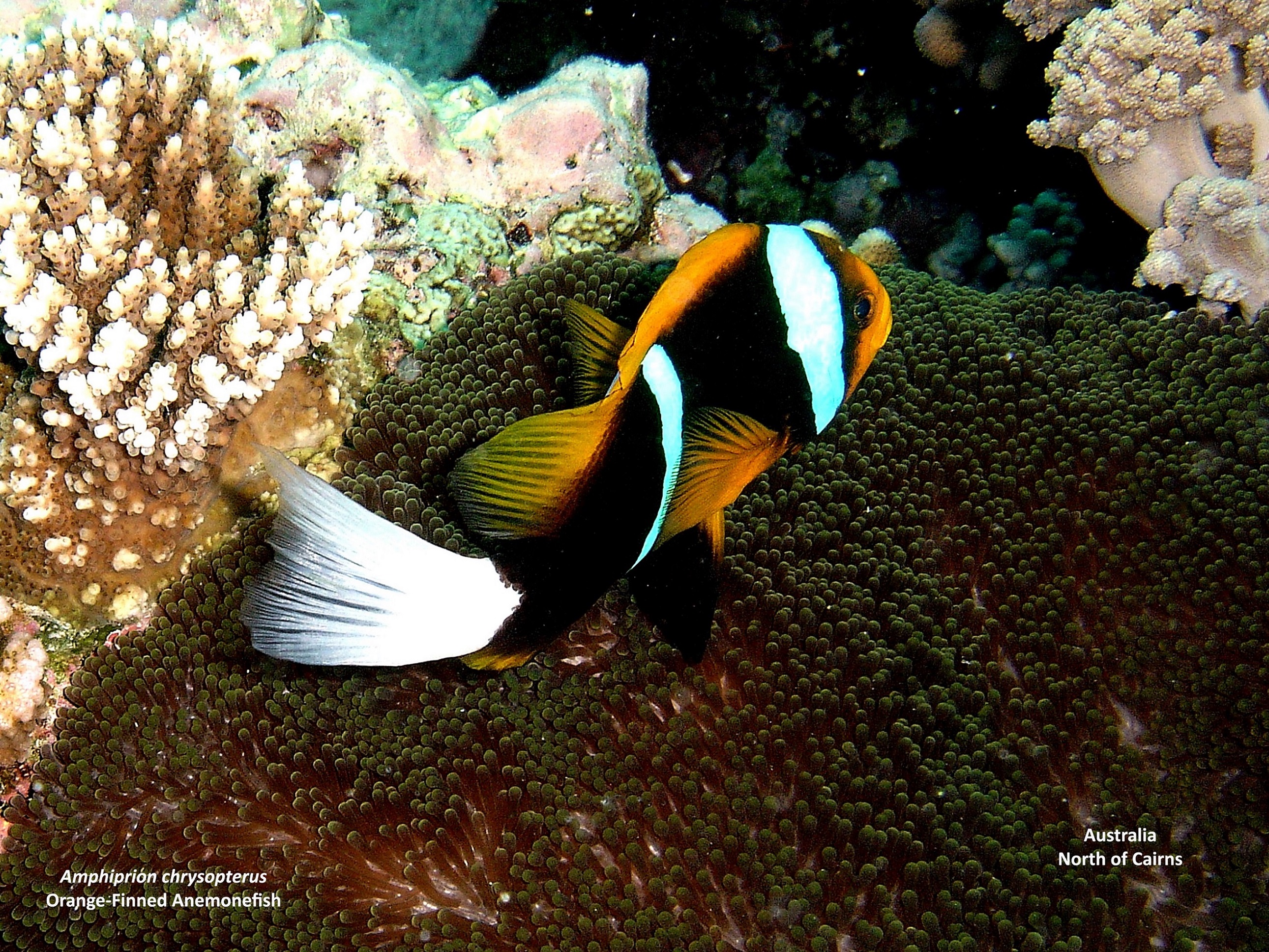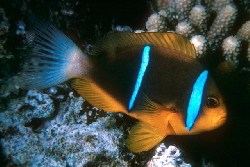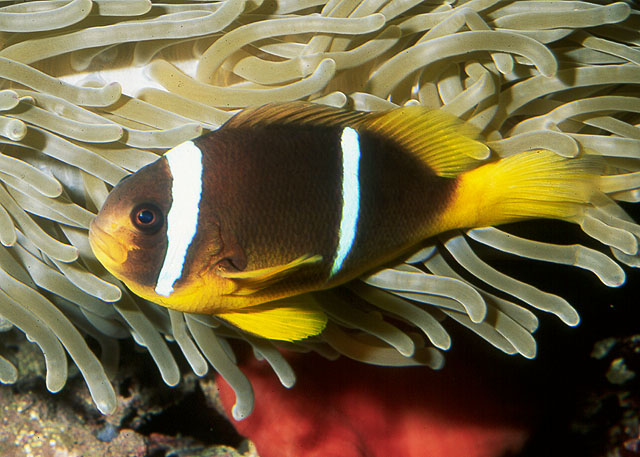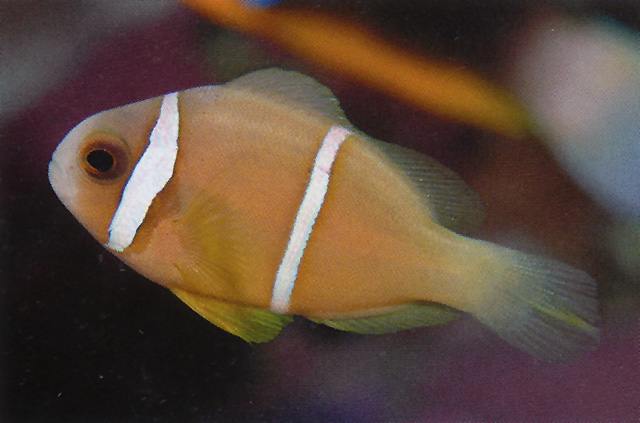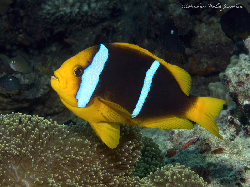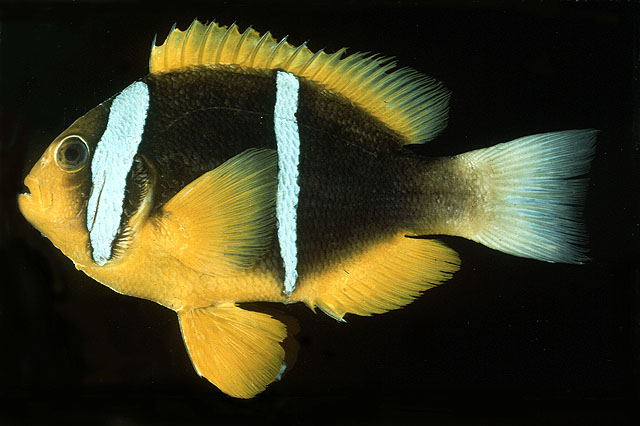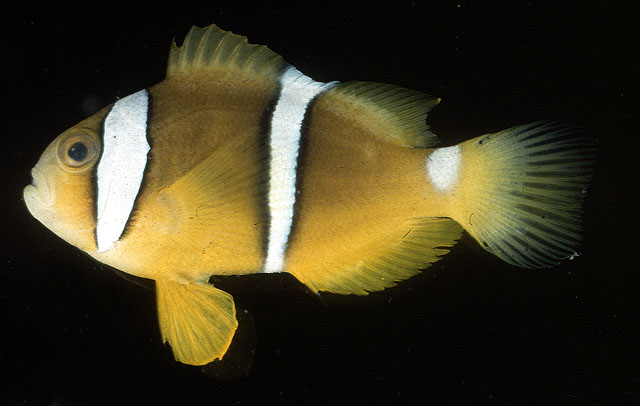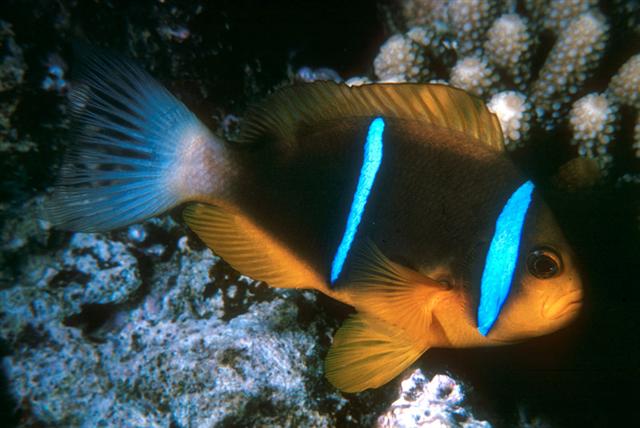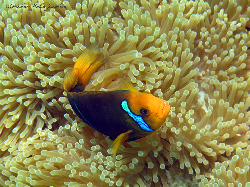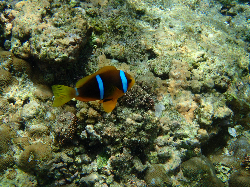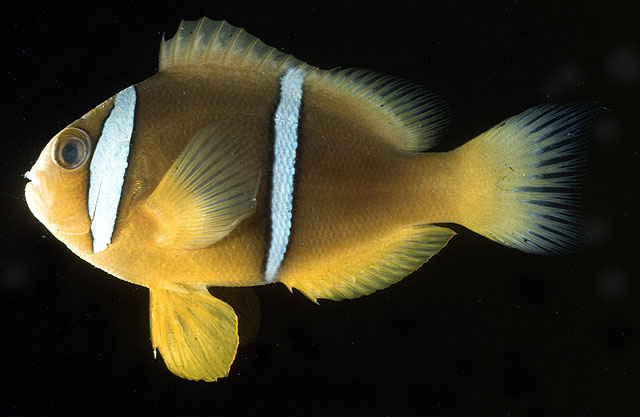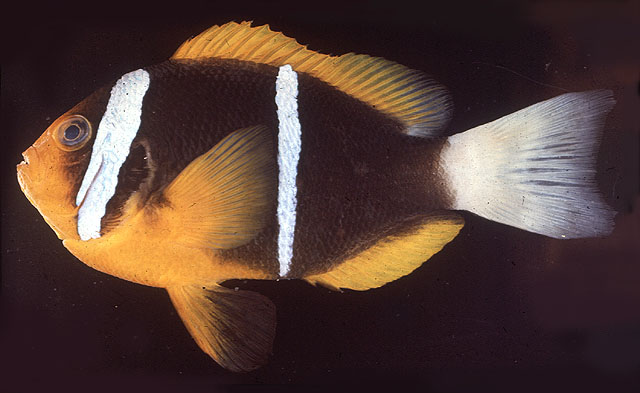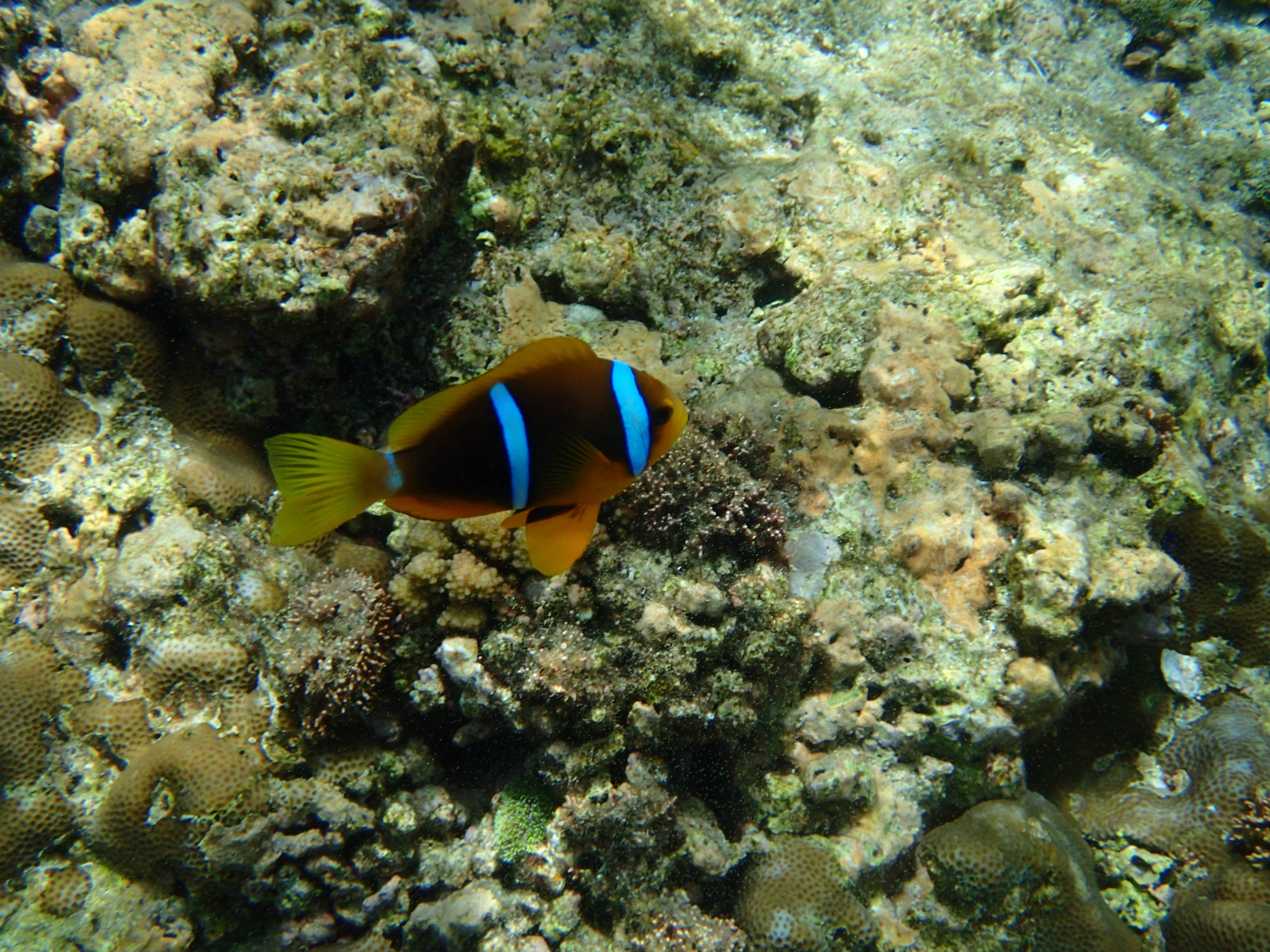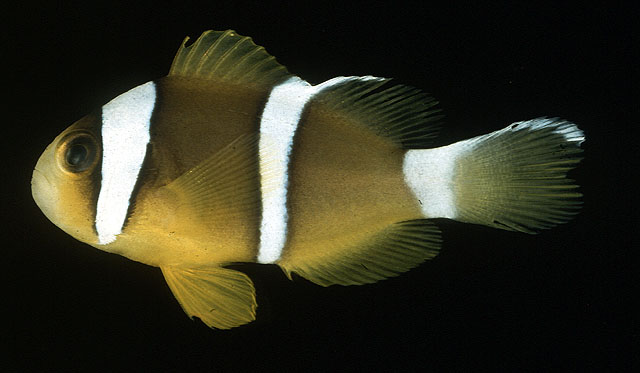Amphiprion chrysopterus Cuvier, 1830
Description
Dorsal spines (total): 10 - 11; Dorsal soft rays (total): 15 - 17; Anal spines: 2; Anal soft rays: 13 - 14.
Common Names
No common names available.
Taxonomic Hierarchy
Kingdom: Animalia
Phylum: Chordata
Class: Teleostei
Order: Ovalentaria/misc
Family: Pomacentridae
Genus: Amphiprion
Species: Amphiprion chrysopterus Cuvier, 1830
Climate Zone
Location
Biology
Adults inhabit passages and outer reef slopes. Known to occur at 25°C. Feed chiefly on planktonic copepods, algae, echiuroid and sipunculoid worms, and pelagic tunicates. Oviparous, distinct pairing during breeding (Ref. 205). Eggs are demersal and adhere to the substrate (Ref. 205). Males guard and aerate the eggs (Ref. 205). Associated with the anemones: Entacmaea quadricolor, Heteractis aurora, Heteractis crispa, Heteractis magnifica, Stichodactyla haddoni, and Stichodactyla mertensii (Ref. 5911). Minimum depth reported taken from Ref. 128797.
Habitat
associated
